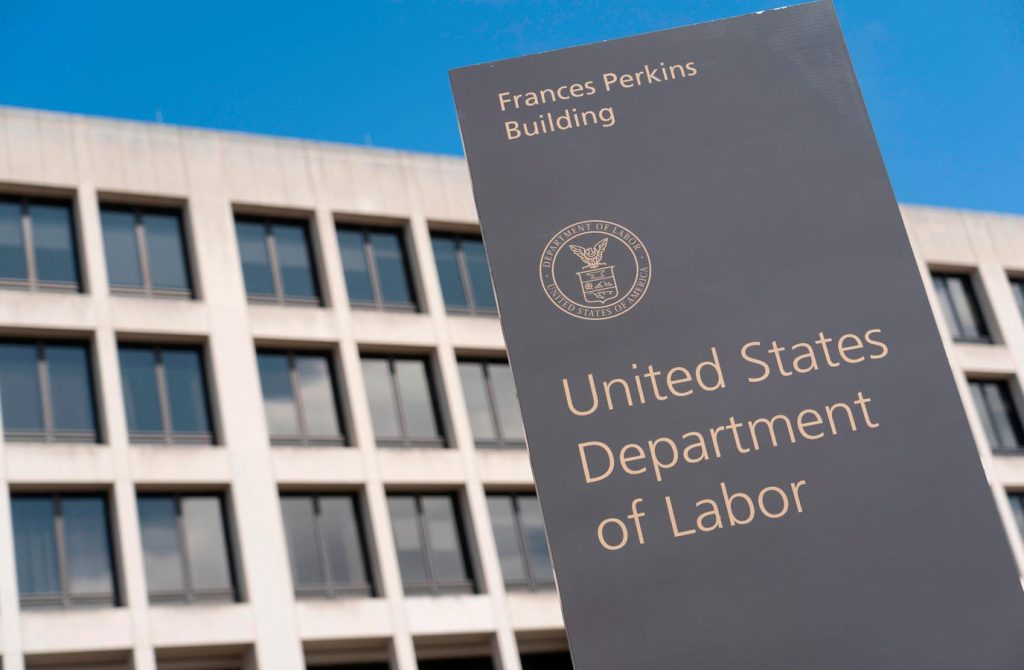The Biden administration may shelve a Department of Labor rule that would have changed how the U.S. government sets prevailing wages for H-1B professionals and employment-based green card applicants. Employers are likely to welcome the move since the Trump administration had attempted to use the wage rule to price out of the labor market many foreign-born scientists and engineers.
The Rulemaking Process
When the Biden administration released its Spring 2023 Unified Agenda for federal agency rulemaking, observers noted a status change for the regulation titled “Strengthening Wage Protections for the Temporary and Permanent Employment of Certain Aliens in the United States.” The Department of Labor removed the regulation from its active rulemaking list and placed it in the section on Long-Term Actions.
“The Department of Labor (DOL) has moved its proposal to raise prevailing wage rates for the H-1B visa and PERM programs to its long-term agenda, historically the first step to a proposal being shelved permanently,” reported the Society for Human Resource Management.
The Biden administration has delayed the rule, perhaps indefinitely, likely because it views the rule as a low priority and does not share the Trump administration’s desire to make it far more difficult to employ highly skilled scientists and engineers. Biden officials have spoken about the global battle for talent and the challenges for employers to find workers in the U.S. labor market. “The Biden-Harris Administration believes that one of America’s greatest strengths is our ability to attract global talent to strengthen our economy and technological competitiveness,” according to a January 2022 White House statement.
The Trump Administration’s DOL Wage Rule
On October 8, 2020, the Trump administration published in the Federal Register a DOL wage rule as “interim final.” The rule went into effect immediately and significantly increased the required minimum wage (prevailing wage) employers were required to pay employment-based immigrants and H-1B visa holders. Employers responded with litigation.
On December 1, 2020, U.S. District Judge Jeffrey S. White, in a written order, vacated and set aside the DOL wage rule and a separate Department of Homeland Security (DHS) rule to restrict the H-1B visa category. It was a major victory for businesses and universities in U.S. Chamber of Commerce v. DHS,
“Defendants [the Trump administration] failed to show there was good cause to dispense with the rational and thoughtful discourse that is provided by the APA’s [Administrative Procedure Act] notice and comment requirements,” according to Judge White. The opinion was binding nationwide and not limited to one geographic region or group of plaintiffs, said Paul Hughes of McDermott Will & Emery, the lead counsel for plaintiffs in the U.S. Chamber of Commerce lawsuit.
Hughes argued at a court hearing that DHS and DOL failed in their rules to connect the H-1B visa category to the coronavirus-related economic problems. He cited a National Foundation for American Policy (NFAP) analysis that showed the U.S. unemployment rate for individuals in computer occupations had not changed significantly from the 3% unemployment rate in January 2020 (before the pandemic spread in the United States).
In his opinion, Judge White wrote, “The statistics presented regarding pandemic-related unemployment still indicate that unemployment is concentrated in service occupations and that a large number of job vacancies remain in the areas most affected by Rules: computer operations which require high-skilled workers.”
During his oral argument and declaration, Hughes pointed to an NFAP analysis that identified hundreds of thousands of active job vacancy postings in computer occupations in the United States. The judge agreed with the argument that the administration’s lengthy delay in publishing the regulations refuted claims the rules were issued to address an emergency.
On January 14, 2021, the Trump administration attempted to salvage the DOL regulation by publishing a final rule. The final rule changed little from the original, and its goal remained to price H-1B visa holders and employment-based immigrants out of the U.S. labor market.
On March 19, 2021, the U.S. Chamber of Commerce and other organizations filed an amended complaint for declaratory and injunctive relief with Judge White. The plaintiffs argued the DOL final rule went against the statutory language. “Although the Immigration and Nationality Act (INA) provides that H-1B visas are to be made available to those with bachelor’s degrees and equivalent experience, DOL seeks to raise the standard, rendering H-1Bs available only to those individuals that are paid commensurate with skills equivalent to a master’s degree,” according to the complaint.
“This is a naked attempt to substantially raise the eligibility criteria for H-1B visas,” according to the plaintiffs. “The DOL Rule is also substantively arbitrary and capricious: It significantly raises wages in an attempt to price out highly skilled foreign nationals, without sufficient justification; real-world data—presented to the agency in comments—demonstrates that the Rule’s methodology is wildly inaccurate; and DOL failed to address material comments placed in the record. Moreover, the Final DOL Rule must be vacated and remanded because it is premised on an incorrect legal interpretation.”
“The Final DOL Rule has an enormous effect on the actual dollar wages H-1B, EB-2, and EB-3 employers are now required to pay,” according to the complaint. “A new analysis by the National Foundation for American Policy compared the prevailing wages calculated on June 30, 2020, under the prior system with those now required under the Final DOL Rule, and the increases are staggering. For example, the required minimum salary for software developers—a common H-1B occupation—is about 30% higher under the Final DOL Rule than under the agency’s prior practice; for computer science teachers, the new minimum is 41% higher at Level I. The same pattern is seen across many occupations frequently held by H-1B workers.” The complaint reprinted a table from the NFAP analysis.
The Biden administration did not oppose vacating the rule and delayed the DOL regulation until November 14, 2022. The Department of Labor would need to go through a new rulemaking process to make changes to the prevailing wage process for high-skilled foreign nationals.
In April 2021, the Department of Labor requested information from the public on calculating the prevailing wage for H-1B visa holders and employment-based immigrants. The information it received might have encouraged DOL to put off indefinitely changing the wage rates.
Data from a recent Characteristics of H-1B Specialty Occupation Workers report illustrates there is not much evidence to support the assertion that H-1B professionals or employment-based green card applicants are “cheap labor.” The USCIS report shows the average annual salary for an H-1B visa holder in computer-related occupations in 2022 was $129,000, and the median salary was $123,000.
Academic research has found H-1B visa holders are paid the same or higher than comparable U.S. workers. In addition to wages, government and legal fees to file an initial H-1B petition and an extension could cost companies up to $30,000. Employers may spend $10,000 to $15,000 or more to sponsor an H-1B visa holder for permanent residence.
The U.S. immigration system remains restrictive for individuals and those employers seeking to hire and retain high-skilled talent. That is one reason the number of Indians immigrating to Canada has more than tripled since 2013. A federal rule that might have inflated the salaries of foreign-born scientists and engineers would have made the process more restrictive.
Read the full article here










